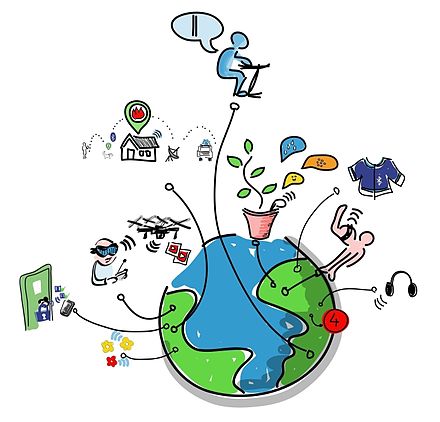
Llewellyn King: Internet of Things and climate change rushing at us
The votes that will be cast on Election Day might be the most important votes cast in a long while, but they’re unlikely to change our lives as dramatically as two great tsunamis that are hurtling toward us.
Change Agent Tsunami One is being driven by science. If you thought that the Digital Revolution had reached its apex with the smartphone, or perhaps Instagram, get back to thinking room.
The Internet of Things is on the march and nothing appears to be able or wants to stop it.
Soon you’ll have “smart cities.” In the beginning, these will be the result of evolutionary change. Things like 5G, the next generation of mobile technology, and Wi-Fi using “short towers” — in fact, a lot of small towers — will make Wi-Fi available to everyone in a city.
Then things speed up.
Already, the Digital Revolution is responsible for these lifestyle changers: barcodes, Uber and Lyft, urban bicycle systems and, yes, those scooters that are whizzing around many cities. Oh, throw in Airbnb.
In store is automated transportation with autonomous electric cars and trucks, automated package delivery by drone. Electric small aircraft and automated pilotless air taxis will take you from your home to the airport. Keeping all these moving objects from knocking into each other or into us will take further electronic wizardry.
All of this will come under the rubric of smart cities. The only impediment to this stunning new world of efficiency and convenience is a cyberattack that takes down the electric grid for days, weeks or longer. Every horror that can be conceived would be unleashed: no communications, no food, no gas, no money, no sewage and no water. We’d all be reduced to the state of primitive man without the skills of the Stone Age.
In its way, cyberattack is a greater threat than anything posed by the arsenals of China and Russia. We might perish without a bang, just a whimper. An ignoble but terrible exit.
Change Agent Tsunami Two is climate change. This has all the makings of a global catastrophe. Low-lying countries might not be able to mocytunt the defenses needed just to deal with ocean rise. They’d have move to higher ground in other countries.
Especially vulnerable is the East Coast of the United States. While the Trump administration may be in formal denial, the agencies of government are preparing within their ability to go against the politicians. National labs have maps and charts of the devastation that would result from a sea rise of several feet. I saw the first of these maps myself at the Lawrence Livermore National Laboratory in California decades ago. I thought they were fanciful. Now I think they were prescient.
The Navy is particularly alarmed because, as Axios has reported, the sea rise along the East Coast is likely to be worse than in other parts of the world, due to tidal and other geographical factors. Particularly, the Navy is worried about bases in low-lying coastal cities such as Norfolk, Va., and is looking at scenarios as to where these could be relocated efficiently and in time.
Other climate change horrors include tropical bugs in northern climes, mutating viruses, more storms, droughts and tens of millions of people driven from their homes, i.e. refugees.
I have no doubt that we’ll lick the cyberwarfare threat. Technology can take on technology. Many good minds in government, industry and the universities are hard at work. Climate change is a many-orders-of-magnitude more implacable problem.
A very different future is ahead, one that isn’t on the ballot — not this Nov. 6, but it will be in future years. Great new political issues are in the making; issues that are outside of the party-speak of this election, but which will emerge soon. In 2020? Possibly.
On Twitter: @llewellynking2
Llewellyn King is executive producer and host of White House Chronicle, on PBS. He’s based in Rhode Island and Washington, D.C.

